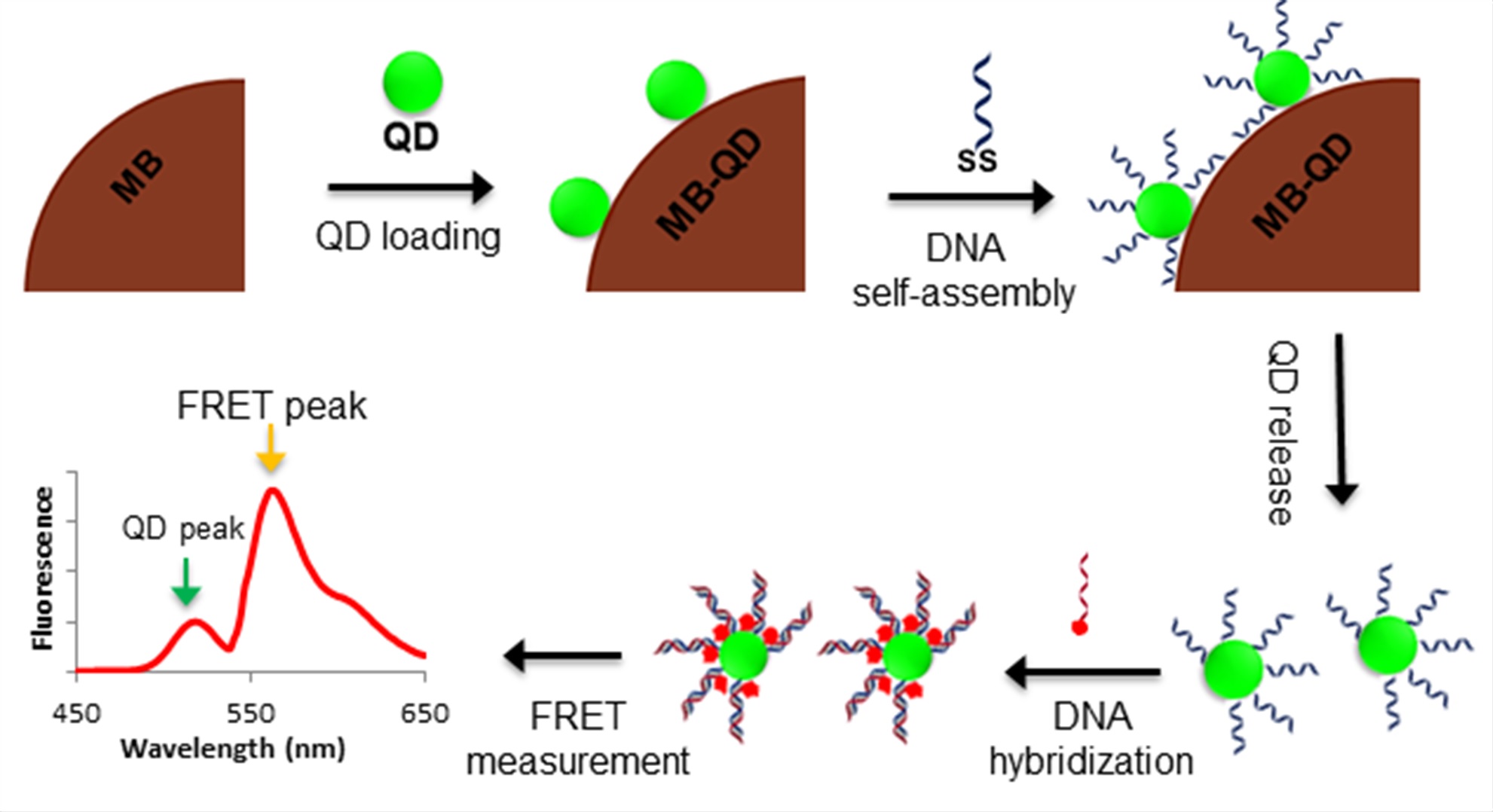Theranostics, a combination of therapeutic and diagnostic technology, has the capability to advance the biomedical and healthcare field into precision medicines for various health issues. Our research on theranostic nanoparticles (NPs) has focused on two directions including development of theranostic platforms using upconversion nanoparticles (UCNPs) and production methods that allows for greater control on NP properties.
UCNPs are an attractive platform for the development of the theranostic strategies because of their unique optical properties including near-IR light excitation, which yields low auto-fluorescence from cellular material and results in little damage to cells when compared to UV-Vis excitation sources used in other imaging systems. Luminescence from UCNPs yields multiple emission bands that can be selected for multiplexing and tuned in intensity based on the power of the excitation source. The aim of our work in the development of theranostic NPs is two-fold: (1) a transduction strategy for biomolecules of interest such as nucleic acids and proteins. (2) A strategy that allows for therapeutic compound release using small drug molecules modified with a photocleavable linker, triggered and released due to the UV and deep blue emission from the UCNPs.
Production of theranostic NPs with controlled display of multiple surface ligands (e.g. targeting agents, biorecognition elements, drugs etc.) is challenging. Our research focuses on developing chemistries that allows for chemoselective and orthogonal functionalization of nanoparticles, with a control over the ligand packing density and ratio, as well as ligand orientation and surface geometry. We also aim to develop microfluidic platforms that allows for automated and industrial-scale manufacturing of these nanomaterials.
So far, our group has demonstrated anisotropic and high-packing density immobilization of DNA oligonucleotides on quantum dots (QDs) in less than one minute using magnetic bead (MB) loading method.

A. Sedighi and U.J. Krull, Rapid Immobilization of Oligonucleotides at High Density on Semiconductor Quantum Dots and Gold Nanoparticles, Langmuir, 32: 13500-13509, 2016 (http://pubs.acs.org/doi/abs/10.1021/acs.langmuir.6b03840).
Another area of research in the group is targeted drug delivery using functionalized nanoparticles. The process of therapeutic release to a target area is controlled by an external photon source. This photodynamic therapy approach is implemented using UCNP's with selected emission in the UV-Vis region. Emission in the UV-vis region allows for triggered cleavage of bonds linked to therapeutics (i.e. chemotherapeutic 5-fluorouracil, 5-FU). Release of 5-FU was conducted in under 14 min with high efficiency.
L.L. Fedoryshin, A.J. Tavares, E. Petryayeva, S. Doughan and U.J. Krull, Near-infrared triggered anticancer drug release from upconverting nanoparticles, ACS Applied Materials and Interfaces, 6: 13600-13606, 2014 (https://pubs.acs.org/doi/abs/10.1021/am503039f).
